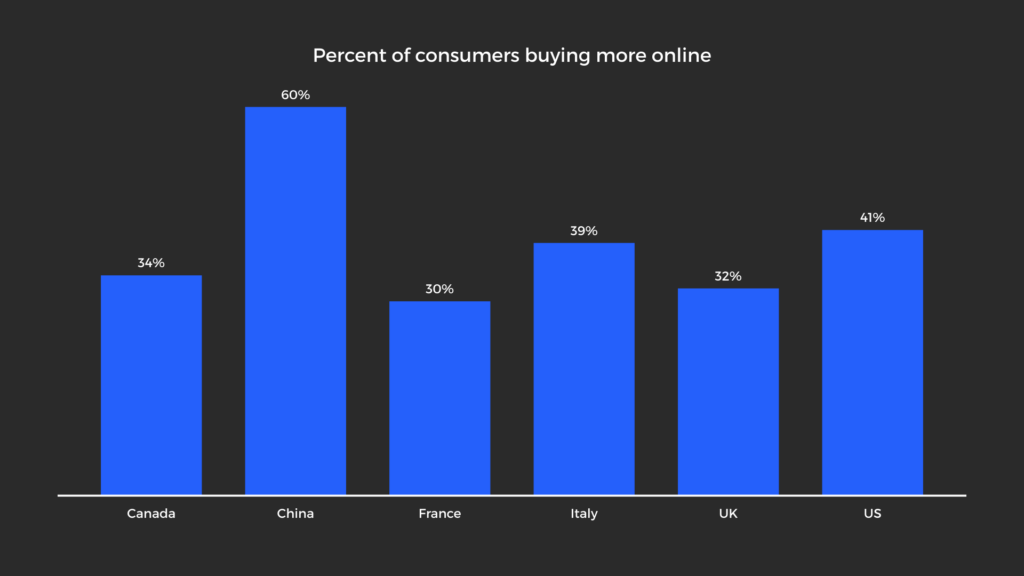Offering Local Payment Methods Online Helps Merchants and Marketplaces Stand Out
Table of Contents
The world is experiencing a tectonic shift in how people live, work and shop — with businesses across the globe scrambling to adapt. In this tough climate, businesses with successful digital transformation strategies will survive, thrive and become leaders in a changing global ecommerce economy. When Forrester recently asked more than 6,000 consumers across the globe about changes in their behavior since the pandemic began, they discovered consumers in all age brackets report trying a variety of digital activities for the first time.1 But many of these new customers remain out of reach for businesses that don’t accept alternative online payment methods.
Alternative Online Payment Methods Matter Now More Than Ever
An alternative payment method (APM) is any way of paying for goods outside of the traditional credit and debit card schemes. Only 18.4% of the world’s population has a credit card.2 Millions don’t even have bank accounts. But they often do have internet access, mobile phones and a big appetite for online shopping.
To grow your sales and reduce cart abandonment, you need to accept payment using preferred local payment methods for online transactions, whether that means ewallets, bank transfers, installments or cash vouchers. Doing this effectively and at scale requires a payment platform that lets you accept alternative online payment methods across multiple countries and regions.
A Perfect Match: Cross-Border eCommerce And Alternative Online Payment Methods
According to Forrester, In China, nearly 60% of consumers report buying more things online than normal since the pandemic began. In the United States and the United Kingdom, around 40% of consumers say they are making more online purchases1.

Spending on healthcare products, household cleaning items and groceries has increased. People are also spending more on streaming media, entertainment and online gaming. Clothing, beauty products a5d big-ticket items have seen the sharpest declines.
Home-bound shoppers are spending more time online and using their mobile devices more than ever before too. While this gives merchants opportunities, it does mean you need to provide seamless digital payment experiences across platforms with in-app payment solutions that automatically offer consumers preferred local payment methods based on their location.
There has never been a better time to expand digital commerce — but a one-size-fits-all approach for diverse regions and cultures will not drive sales. Worldwide, fewer than 33% of buyers have used a credit card to pay for a purchase in the last year. And in all markets except the U.S. 17% of ecommerce sales were paid through an ewallet. At the same time, real-time bank transfers and QR payments are flourishing, according to the World Bank Global Findex.3

Playbook for the New Era of Digital Commerce
Drive Digital Transformation, Tap New Consumer eCommerce Trends and Grow Sales Globally with Local Payments
Localize Shopping and Payment Experiences to Get in on the Digital Commerce Boom
Localize Online Alternative Payments: While western countries favor cards, in Southeast Asia, offering bank transfers and ewallets is critical. Rapyd Collect improves cart conversions by automatically offering relevant local payment methods at checkout.
Show Prices In Local Currencies: A quarter of shoppers leave a website if their local currency is not shown, according to Retail Info System.4 Importantly, showing your customers local pricing helps them make value judgments.
Speak Your Customers’ Language: Translate site navigation, product descriptions and reviews to build trust. Providing customer support in a local language helps make your company more approachable for customers as well. If live, local-language support is out of the questions, consider a chatbot or local-language support portal.
Whether you’re an online store or marketplace, taking these steps can make your products and services easier for customers and clients to purchase digitally.
Digital Commerce Is Evolving In 2020
As the World Trade Organization5 recently noted, the COVID-19 pandemic has shown ecommerce can be a solution for consumers during crisis. It has aided ailing economies and propelled businesses. As many brick-and-mortar companies face the uncertainty of public health restrictions, digital enterprises remain fortunate to be able to operate online — but only those who tailor checkouts to accept payments using local payment preferences will fully benefit from growing consumer demand.
Download the Rapyd Playbook for the New Era of Digital Commerce, Featuring Research from Forrester
Uncover how consumer’s online behavior has changes across markets and how you can reach more customers with localized commerce experiences.
Sources:
- Forrester Consumer Technographics COVID-19 Survey 1, 2020
- World Bank Global Financial Inclusion, 2017
- https://globalfindex.worldbank.org/
- Rapyd Playbook for the New Era of Digital Commerce, 2020
- https://www.wto.org/english/tratop_e/covid19_e/ecommerce_report_e.pdf
Subscribe Via Email
Thank You!
You’ve Been Subscribed.



